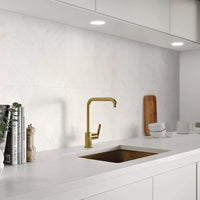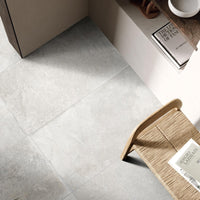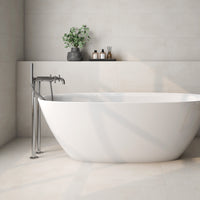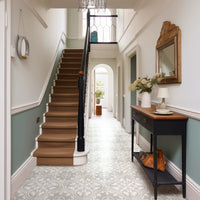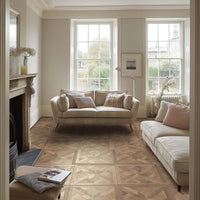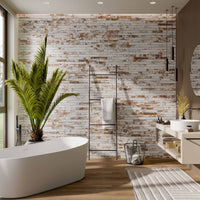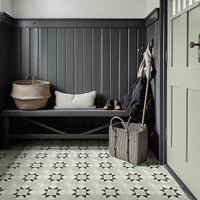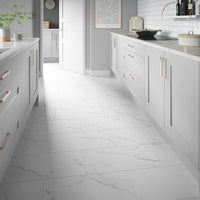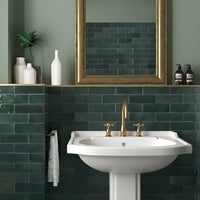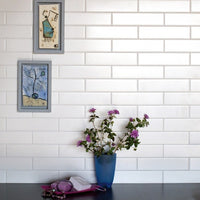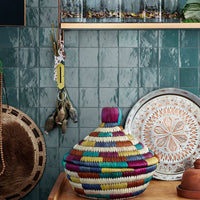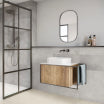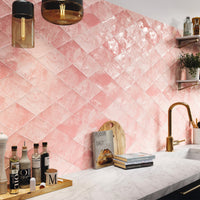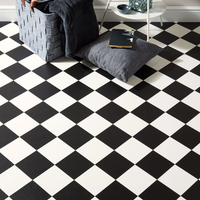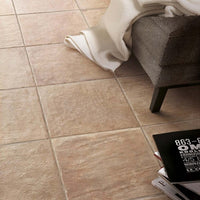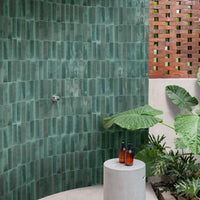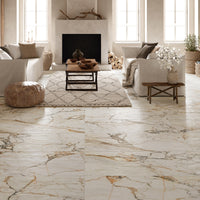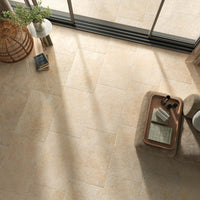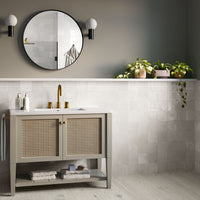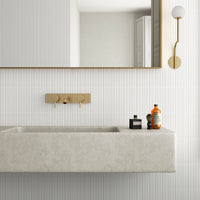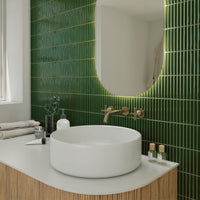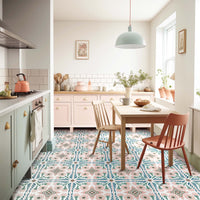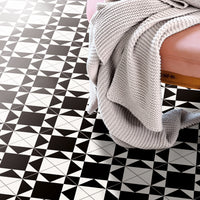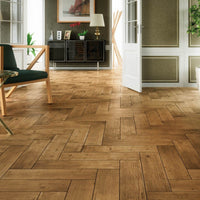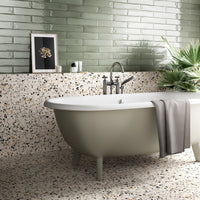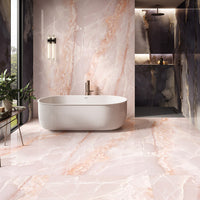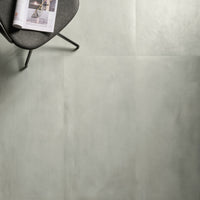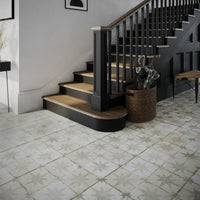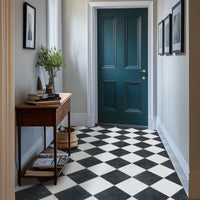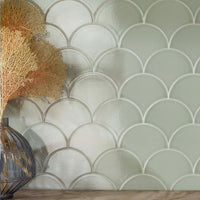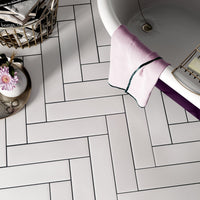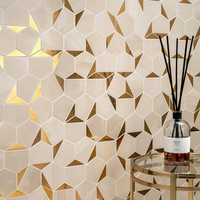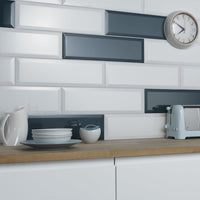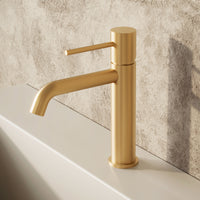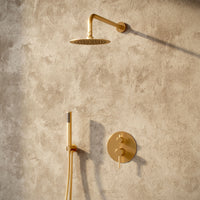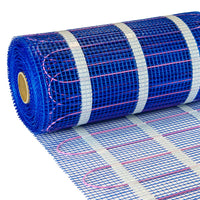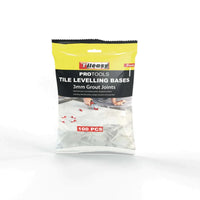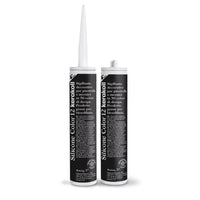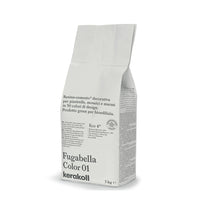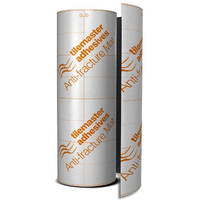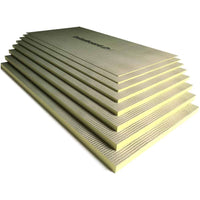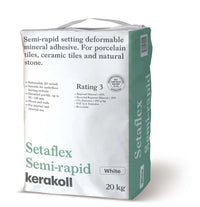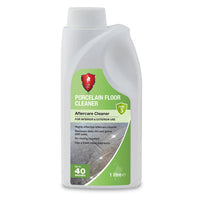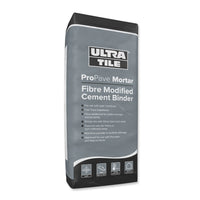Highly versatile, porcelain tiles can help to transform patios and terraces; adding style and durability to almost any domestic outdoor space. Small projects can also benefit from the functionality of porcelain, especially balconies and conservatories, where porcelain tiles are perfect for achieving that sought-after, seamless, inside-out look.
Garden rooms and other outdoor spaces have evolved in both function and form; something that will have been particularly appreciated during the current Coronavirus lockdown.
At Porcelain Superstore, we know that porcelain tiles offer a long-lasting floor covering that can cope with the UK’s weather while providing a safe, aesthetically pleasing design solution. While traditional stone flagstones and timber decking remain popular, the growth is in porcelain tiles that can be installed indoors and out, allowing home owners to create a wide range of stylish yet functional spaces.


The desired look may be a mosaic, a stone-effect, a timber-effect, a concrete-effect, a terrazzo-effect, or something patterned or textured. Buyers have discovered that no matter what look is desired, porcelain tiles – whether small, medium or large – will deliver a robust, hard-wearing floor covering that will stand the test of time. Easy to install and maintain, these tiles also deliver when it comes to slip resistance; but it is important to know how the slip resistance of tiles are tested and graded so that you make an informed, safe selection for your terrace, patio, or outdoor kitchen.
Safety And Slip Resistance
At Porcelain Superstore, as professionals involved with the design and installation of external porcelain floors, it is important we understand as much as possible about what is entailed in ensuring they are ‘safe’.
So, what is safe? There is a lot of information available; some based on Standards, some based on best practice guidance, and some based on pure common sense and experience.
Let us be clear about one thing: slip resistance is the single most important safety consideration of any floor finish, including tiles. Effective slip resistance is particularly important for the elderly, and those with mobility or visual impairments.
The slip resistance of a tiled floor depends upon many factors, including the roughness of the surface; and if it is wet, dry or regularly contaminated by liquids or other contaminants. Slip performance is also affected by the wear characteristics of the floor finish; and the cleaning and maintenance regime.
Other factors to consider include humidity, slopes, and ramps. Wherever there is a change of floor material or texture, there is an increased risk of slipping or tripping, particularly if surface of the two materials varies greatly. This can be minimised by locating the material change at a predictable location, such as a doorway.
Slip resistant floor finishes should always be used in areas where safety is paramount, such as entrances, ramps, stairs and landings; and also in areas subject to frequent wetting, such as swimming pool surrounds.
On the face of it choosing floor tiles that are 'non-slip' or 'anti-slip' would seem to be a simple matter. However, in practice, this issue is far from black and white, as ‘slip resistant’ can mean different things to different people. The only way to make a clear and informed choice is to consult a trustworthy retailer who understands, and can explain, the methods used to test a floor tile’s slip resistance properties.
Ramp & Pendulum Tests
There are two main options: the Ramp test and the Pendulum test. In Europe, particularly Germany, the Ramp test is king, and its values are commonly found on the boxes of slip-resistant floor tiles from Italy, Spain and the other large European producer nations.
The Ramp test provides an R rating, from 9 to 13, with slip-resistant tiles achieving a rating of R11 or higher.
The actual ramp test is simple: the tester, wearing either standardised footwear or barefoot, walks on the surface to be tested as the inclination of the test surface is increased - just like walking up a ramp of increasing steepness. When traction is about to be lost, or the tester starts to slip, the angle reached by the ramp at this critical point determines the R rating of the tiles being tested.
In the UK there are some objections to the Ramp test because these tests can only be carried out in a laboratory, rather than in-situ, and tiles can be awarded different R ratings depending on whether they are dry or wet/contaminated. The R-ratings themselves are also quite broad, with the results are interpreted into five groups - R9 to R13 - with R9 being the slipperiest and R13 being the least. There are no such categories as R1 - R8; and R9 is not suitable for areas requiring slip resistance.
In the UK, the Health & Safety Executive (HSE) has a preference for the Pendulum test, and in this country it is generally accepted to be the most reliable method of testing the slip resistance of floor tiles. This pendulum test mechanism utilises rubber pads to replicate a shoe or foot coming into contact with the non-slip floor tile, measuring accurately the surface friction between them, which it quantifies on a scale between 1 and 100. This Coefficient of Friction (CoF) figure can be compared to the HSE’s guidelines which recommend a minimum score of 36 for floor coverings to be used in public places in both wet and dry conditions. A tile rated R11 using the ramp test method has an equivalent pendulum test value (PTV) range of 34 to 51, and so could, theoretically, fail to meet the HSE minimum PTV guideline of 36.
This is why most leading UK tile suppliers use PTV values when determining the non-slip properties of porcelain floor tiles, with many erring on the side of caution, and recommending tiles with a 40+ Pendulum rating in exterior areas. This can take out of the equation any minor differences in performance from tile to tile, and due to any cleaning and maintenance issues.
Maintaining slip resistance of floor finishes
The two main factors that effect the on-going slip resistance performance of a floor finish are wear resistance and surface contaminants. Unglazed porcelain tiles have unsurpassed wear resistance and so, when correctly chosen and installed, should last the lifetime of a building. The slip resistant characteristics of such tiles can be maintained with a suitable cleaning regime.
Surface contaminants can affect slip resistance. This changes with the specific contaminant, so that water will have less of an effect on slip resistance than oil, for instance. Where fluid contamination cannot be avoided, the HSE recommends that floors be laid to falls so that the most of the contamination drains away.
As a general rule of thumb when considering floors, the harder, smoother and ‘shinier’ the floors surface (such as a polished marble style floor) the better the slip resistance when dry but the worse when wet or contaminated. In contrast, matt, rough or textured surfaces, will record a lower pendulum test value when dry but a far better value when wet. But this is an area that has seen significant research in recent years, with some incredibly smooth floor tiles now offering high levels of slip resistance.
A great example is StepWise, the new surface technology from leading Italian producer Marazzi that is both soft-touch and anti-slip. Marazzi has recently demostrated the efficacy of StepWise on high-performance products like Terratech technical stoneware, new stone-effect porcelain in the Mystone collection (shown below) and the Crogiolo D_Segni Blend highly decorative small-format tiles.


StepWise surfaces combine a high degree of slip resistance with a surface that is still soft to the touch and easy to clean, since it has no superficial roughness. The other technical characteristics of the porcelain stoneware are unaffected, meaning it offers outstanding resistance to mechanical stresses, chemicals, wear, scratches, deep abrasion and bending; is easy to disinfect, and withstands frost, fire, mould and UV radiation.
All-in-all, Porcelain Superstore’s advice is to always check the tile’s slip resistance rating, and, if you have any doubts, confirm this result with your specialist tile supplier prior to purchase.
20mm exterior-grade porcelain
Versatile and functional, 20mm porcelain tiles deliver a hard-wearing floor covering that can withstand heavy use and extreme weather conditions. Perfectly suited to high traffic areas, they offer an excellent slip rating (R11+ or PTV 36+) for added safety outdoors.
Frost proof, porcelain tiles will not crack during winter months or harsh weather conditions, making them ideally suited to the British climate. Each tile is manufactured to tight tolerances ensuring an even thickness and level surface for a secure surface underfoot, and many have rectified edges for a premium finish. With many collections offering a co-ordinating 10mm indoor tile, the look can easily be extended from conservatory or kitchen to the patio for a seamless continuous design.
Available in a range of large formats, installation inside or outside is simple and straightforward, with fewer grout lines and cuts needed. Strong and robust, the tiles can be cut with a water-fed diamond blade for a perfect fit every time.
20mm porcelain tiles can be installed in the same way as a traditional patio using sand and cement. However, they will require a layer of priming slurry to the back of the tile to ensure they bond to the substrate.


For a simple solution that does not require specialist installation, porcelain tiles can also be loose laid onto grass or gravel. A pedestal installation system can also be used. This easily elevates the tiles without the need for specialist equipment or adhesive. As the pedestals are not fixed, the tiles can be moved around or removed if any last minute changes are made to the design, or if there are any issues to address with uneven substrates.


The pedestal system also delivers a clever solution for hiding equipment such as pipes or cables. Once installed, the pedestals create empty space underneath the patio, for a seamless, clutter free finish. As the tiles are not grouted when installed with the pedestal system, water naturally drains through the gaps, ensuring water does not sit on top of the patio.
Advantages of 20mm porcelain pavers
Exterior porcelain tiles have a raft of advantages over competitive products. They have low water absorption, are stain-, fire, frost- and chemical-resistant. They are durable and not affected by moss or insects. Accurately dimensions and uniform thickness simplifies installation, and also allows continuity of the same floor finish, inside and out. Finally, these tiles are tough, very tough, and can even withstand wheeled traffic and the high levels of usage.
But for most homeowners, the real beauty of exterior porcelain tiles lies in the wide range of striking designs that is available, which appeals to all consumer tastes. Natural materials, tactile textures, dark or light tones; the design possibilities are endless. With some creative thinking, even the smallest space can be turned into a functional entertaining area or extra living room.


For the more adventurous who prefer an eclectic look, experiment with different sizes and textures laying wood and stone effects side by side for a visually stunning combination. You can also create paths and zoned areas with individual tiles that lead further into an outside space for an attractive, low maintenance floor covering that connects the exterior of the house with a garden or covered gazebo area.
For further reading, an eight-page Health and Safety Executive document called “Assessing the slip resistance of flooring: a technical information sheet” is available at hes.gov.uk
